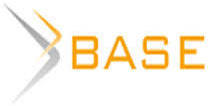CONSIDERING SOME BEHAVIORAL ECONOMIC ISSUES CONCERNING THE DILEMMA OF CUSTOMERS BUYING SMARTPHONES
Abstract
Different brands are represented on the smartphone market. In this article, the author refers to the study of the dilemma, which is determined by the customer's choice of one or another manufacturer of smartphones. General theoretical approach is based on the scientific works of the scientists: Mitchell, W. (1914). Clark, J.M., (1918). Katona, G. (1980). Leibenstein, H. (1985). Simon, H. A. (1978). Gilad, B., Kaish, S. (Eds.), (1986). Ainslie, G. (1992). Camerer, C. F, (1985). Kim P. Corfman (1995, Goldman, Alfred E. (1962), Welch, Joe L. (1985), Levy, Sidney J. (1979). The author has developed criteria for assessment of the smartphone, which were presented in the questionnaire. The author uses a survey to research the consumer preferences. The respondents rated the products of such brands as Acer, Apple, Dell, HP, Lenovo, MSI (does not manufacture smartphones), Samsung, producing smartphones. The author processed the results with the help of MS Excel. The author has formulated conclusions in accordance with the results of the conducted research.Keywords: a customer, the Customer's Dilemma, behavioral economics, the questionnaire, a homogeneous group, the respondents, the brands, a scale, a rating, assessment criteria, values of the criteria
1. Introduction
A customer is a key figure in the system of economic relations. Manufacturers produce products that consumers need. The attempt to understand the needs of the consumer determines the necessity to conduct a market research. The high degree of competition exists in the market of smartphones. Various manufacturers offer to a buyer wide range of smartphones. New players (Caterpillar, FLY, Prestigio, Pantech Curitel) appear in addition to the well-known smartphone manufacturers (Acer, Alcatel, Apple, Asus, HTC, Lenovo, LG, Motorola Mobility LLC, Nokia, Philips, Samsung Electronics, Sony, ZTE) on the market of smartphones. In addition, well-known brands Microsoft (Lumia), Hewlett-Packard began to produce smartphones. The buyer can choose:
- an affordable smartphone,
- a professional smartphone with a long period of time for battery life,
- a prestigious smartphone for entertainment,
- an ultra-premium smartphone,
- a premium design smartphone.
Various factors determine the choice of a customer. However, a buyer has the budget limits. Therefore, there is a Customer's Dilemma.
2. Theoretical background
The researchers have scrutinized behavioral economics widely in order to understand the factors, which affect buyers. Mitchell stressed the necessity of a combination of economics and psychology in Quarterly Journal of Economics essay “Human Behavior and Economics” (Mitchell, 1914). Clark agrees with Mitchell in Journal of Political Economy paper: “The economist may attempt to ignore psychology, but it is sheer impossibility for him to ignore human nature” (Clark, 1918). Katona develops the behavioral economics. He wrote: “Generalizations about economic behavior emerge gradually by comparing behavior observed under different circumstances” (Katona, 1980). Leibenstein and his adherents have underlined the difference between optimizing behavior and optimal decisions this causes for the organization they belong to” (Leibenstein, 1985). Camerer studied individual decision making, he thought: “Decision making is increasingly important for economics for at least two reasons.
First, in many economic settings individuals make decisions by and among themselves: consumers save, sell their labor, buy houses and durable goods, form economic and social relationships, and bargain…Second, economic analysis has also reached into increasingly complicated domains recently. Until thirty years ago there were few formal models with any uncertainties. Weak assumptions about agent rationality were adequate to generate strong market level results (e.g. Pareto optimality). Now many models presume agents can make choices under risk and uncertainty, over time, keeping in mind subtle game-theoretic effects. As the models grow and more complicated, agents are assumed to have more and more rationality. Then it is more likely individual agents violate the models…” (Camerer, 1985). Simon (1978), Gilad, Kaish (Gilad, Kaish, 1986) consider economics as a complex of knowledge in the sphere of anthropology, organization theory, psychology, sociology. Ainslie defines microeconomics as a process of negotiations between individuals (Ainslie, 1992). Therefore, there are good developed scientific approaches to the behavioral economics and the last one (Ainslie, 1992) is rather interesting, taking into consideration our research method.
3. Research method
Researchers often use a written survey to obtain information allows researchers to study this or that phenomenon. A written survey is one of the methods of quantitative research, when the respondent fills out the questionnaire on their own (without the participation of the interviewer). Most experts agree that the survey is used for conducting surveys among homogeneous groups. Kim P. Corfman stresses the importance of having a homogeneous group. “An issue that is widely debated among those who provide and use focus group services is the importance of group member homogeneity to the quality of a group's output” (Kim P. Corfman, 1995). Various authors have considered a homogeneous group in different ways. Goldman defines the criteria for homogeneous group. «A number of individuals may be very different in national origin, religious beliefs, political persuasion, and the like; but if they share a common identity relevant to the discussion...., a group can form» (Goldman, 1962). Welch draws our attention to the complexity in the formation of a homogeneous group: «Mixing participants from distinct market segments into a single group is not recommended because each person's segment has different requirements» (Welch, 1985). We have taken into account the views of Levy. «Sometimes a varied group is wanted, for the interplay of diverse views on a topic that all can discuss.... However, sharp diversity or division in the group is hazardous» (Levy, 1979). We decided to make a written survey among the students, because members of a group had to each other a lot in common: age, cultural background, convictions, etcetera. We took into consideration that: «In homogeneous groups, members are likely to know the same things, come at the problem from the same perspective, and consequently, are likely to overlook some important information or take shortcuts in the problem – solving process» (K. Verderber, R. Verderber, D.Sellnow, 2013). Therefore all respondents were active users of various smartphones. We considered a student`s group as a homogeneous group. We had to observe some requirements of a written survey. There was an opportunity to clarify to respondents the difficult moments during the procedure. A written survey was anonymous. We tried to exclude the influence of the personality of the interviewer on the audience. Respondents had enough time to think about questions.
We conducted a questionnaire survey of 100 respondents – students who study management and computer science. These were full-time students and part-time students. Later, when processing the completed questionnaires we found out that 37 respondents messed the questionnaires. Thus 63 respondents participated in the survey.
The respondents rated the production of the brands Acer, Apple, Dell, HP, Lenovo, MSI[1], Samsung, which produce the smartphones. In the questionnaire, we have placed among the 6 well-known brands 1 brand, which does not manufacture smartphones (Micro-Star International - Taiwanese manufacturer of motherboards, video cards, laptops and tablets). Respondents rated some smartphone of an average category on a scale of 1-9, according to their own preferences. A rating of 1 corresponded to the minimum value; a rating 9 corresponded to the maximum value. Figures that the respondent noted in the questionnaire should not be repeated in column profiles.
4. Results
Assessment criteria were located at the left side of the questionnaire: the weight of the smartphone, the size of a smartphone, design of the smartphone, the processor of the smartphone (the number of cores, the clock frequency or the number of operations of calculations per second), the smartphone memory (RAM), quality video (screen) of the smartphone, the quality of the speaker system of the smartphone, battery capacity of the smartphone, the image of the brand – manufacturer of the smartphone. The brand name of the smartphone was located at the right side of the questionnaire (Appendix 1).
Appendix 1

We asked the respondents to set the assessment for each brand (column). We believed that such an arrangement - criteria (left) and brands (right) – allowed us to achieve the maximum degree of the range of values in the row; the value that characterized the relevant criteria. We planned to process the value of each criterion using MS Excel by activating the corresponding function to calculate the average.
We obtained the following values of the criteria:
- weight of the smartphone=3,428571429;
- the dimensions of the smartphone=3,628117914;
- design of the smartphone=4,344671202;
- processor of the smartphone (number of cores, the clock frequency or the number of operations of calculations per second)= 6,260770975;
- memory (ram)= 6,10430839;
- the video quality (screen)= 5,659863946;
- the quality of the speaker system=4,988662132;
- battery capacity=5,337868481;
- the image of the brand- manufacturer of the smartphone=4,614512472.
The sum of the criteria was 100%. This value was 44,36734694 in absolute terms.
5. Conclusions
Since the respondents have spoiled 37 questionnaires, we state the fact of carelessness of the respondents.
Each respondent assessed the MSI. But Micro-Star International does not manufacture smartphones. We think that respondents are indifferent to the brand or the respondents are not informed about MSI`s products.
According to the research, the criterion «weight of the smartphone» had 3.428571429 points, or 7.73%. The criterion «weight of the smartphone» was the least important indicator. Criterion «processor of the smartphone» was the most important indicator with its value 6.260770975 points. Criterion «processor of the smartphone» equaled 14.11% in relative terms.
[1] MSI does not manufacture smartphones.


















Reference lists